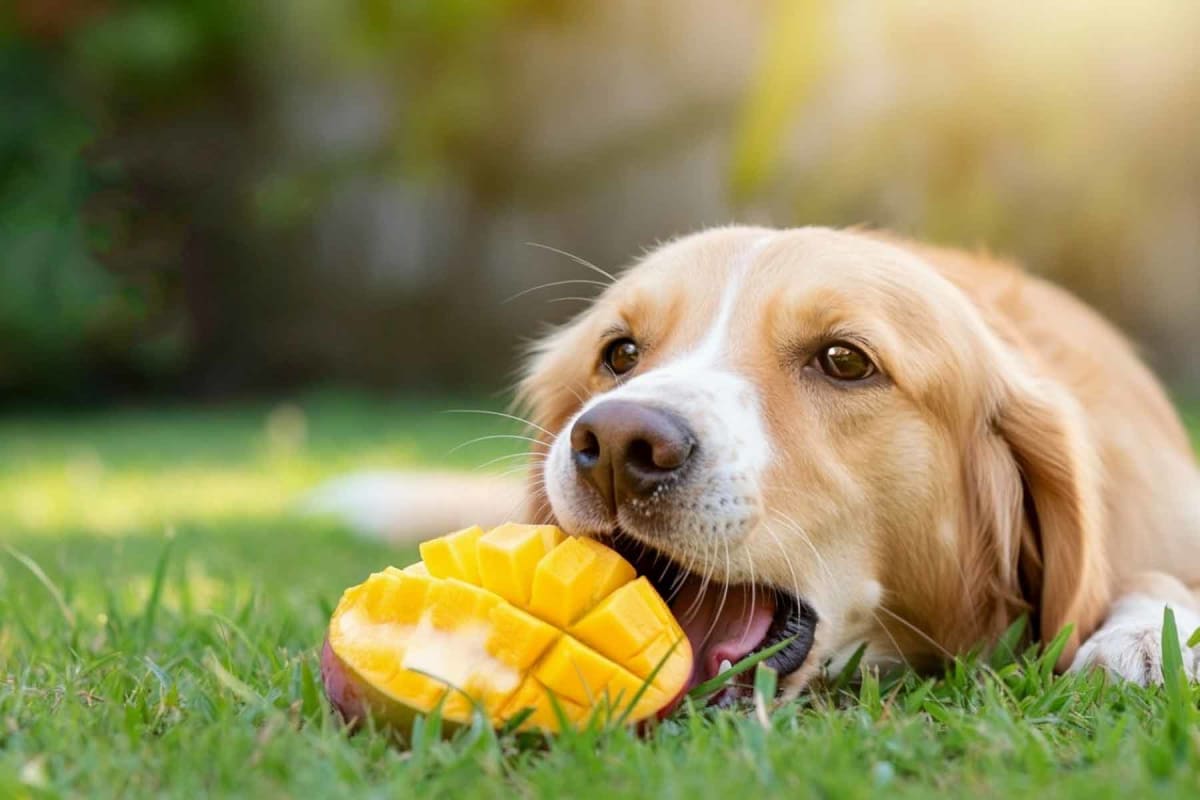
Can dogs eat mango?
Can dogs eat mango?
Can dogs have mango?
Yes, dogs can eat mango! This sweet, tropical fruit is generally safe for your canine companion and provides several nutritional benefits. However, as with many human foods, there are important guidelines to follow when feeding mango to your furry friend.
Can dogs eat mango skin?
No, dogs should not eat mango skin. While the flesh of the mango is safe, the skin can be difficult for dogs to digest. It's best to peel the mango before offering it to your canine companion to prevent any potential digestive issues.
Can dogs eat dried mango?
While dogs can technically eat dried mango, it's not the best option. Dried mangoes are very high in sugar and calories, which can lead to weight gain, diabetes, and other health issues if consumed in large quantities. Fresh mango is a healthier choice for your dog.
Is mango good for dogs?
Mangoes are non-toxic to dogs and can be a healthy occasional treat. Rich in vitamins A, B6, C, and E, mangoes also contain potassium and both soluble and insoluble fiber that can support your dog's digestive health.
However, not all parts of the mango are safe. Always remove the skin and pit before serving mango to your furry friend.
When is mango bad for dogs?
While mango flesh can be a healthy tropical treat for your dog, not all parts of the mango are safe, and the tasty fruit comes with some additional risks:
Mango pit: The pit is a choking hazard and contains small amounts of cyanide, which is toxic to dogs.
Overconsumption: Too much mango can lead to digestive upset, including diarrhea.
Sugar content: Mango is high in sugar, so consuming large amounts can lead to dental problems, weight gain, or diabetes.
Always consult with your veterinarian before making significant changes to your dog's diet, especially if your pet has existing health conditions like diabetes or weight issues.
How to safely feed mango to your dog
Proper preparation ensures mango is safe and enjoyable for your dog. Follow these simple steps when preparing mango for your canine friend:
Wash the mango thoroughly to remove any pesticides or chemicals.
Peel the mango completely to remove the skin.
Cut away all flesh from the pit.
Cut the mango flesh into appropriately sized pieces for your dog.
Serve plain—no added sugar, salt, or spices. It can be raw, mashed, frozen, or even blended into a smoothie for your dogs.
Always introduce new foods gradually and watch for any signs of digestive upset.
Fresh is best when it comes to feeding mango to dogs. Avoid canned mangoes or mango products that may contain added sugars, syrups, or preservatives.
How much mango can a dog have?
For small dogs, a few small cubes of mango is plenty. Medium to large dogs can have a bit more, but still keep portions reasonable. Even for large breeds, limit to just a few slices.
Moderation is key when feeding any treat to your dog. Treats, including fruits like mango, should make up no more than 10% of your dog's daily caloric intake.
Signs to watch out for
Even healthy treats can cause problems if consumed in excess. Here are signs that your dog may have had too much mango or is experiencing an adverse reaction:
Vomiting or diarrhea
Lethargy or unusual behavior
Abdominal discomfort or bloating
Loss of appetite
Excessive thirst
If your dog displays any of these symptoms after eating mango, contact your veterinarian. If you suspect your dog has swallowed a mango pit, seek immediate veterinary care as this constitutes a medical emergency.

Other safe foods
While mango can be a healthy treat, there are many other fruits and vegetables dogs can eat in moderation. Some options include:
Bananas
Blueberries
Carrots
Cucumber
Green beans
Pineapple
Watermelon (seedless and without the rind)
Always research new foods before introducing them to your dog's diet and consult with your veterinarian if you have any concerns.